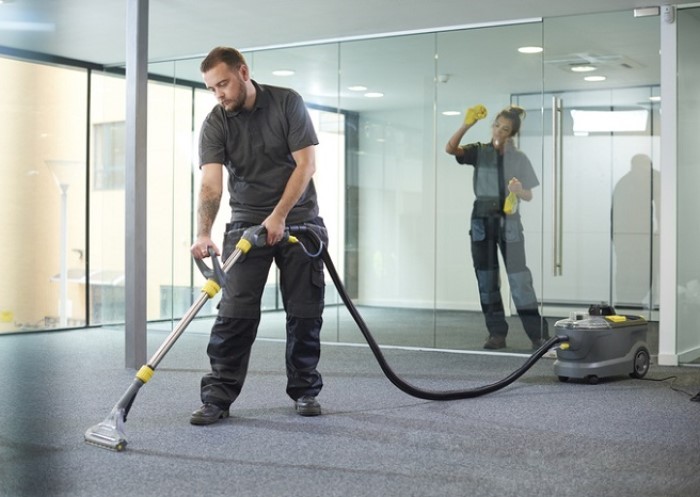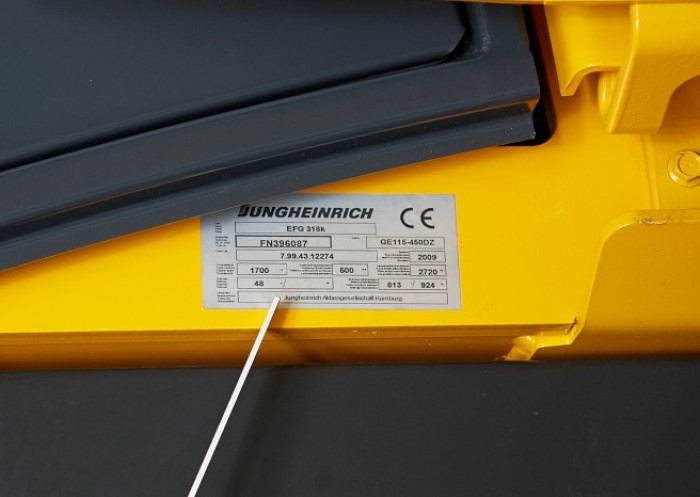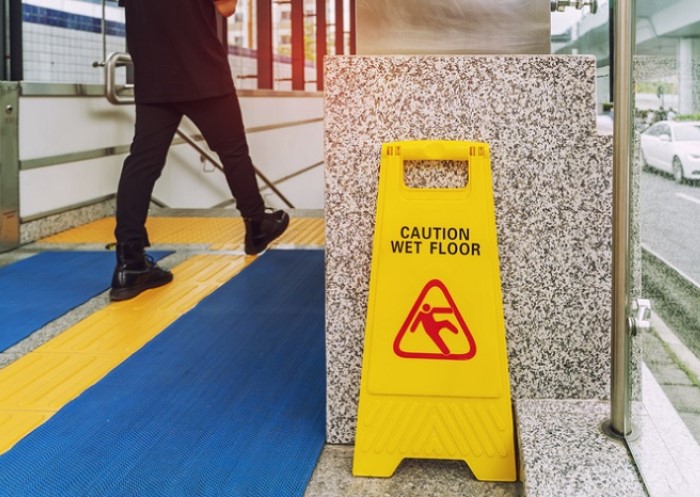Table of contents
ESD is an abbreviation for “electrostatic discharge” and refers to the abrupt exchange of charges between two objects with different voltage potentials. The phenomenon is also called transient overvoltage and can be accompanied by flying sparks or light effects.
In everyday life, electrostatic discharge occurs frequently, for example when taking off clothes that are made of synthetic fibres. ESD can also occur when walking across carpets made of synthetic fibres and then touching metallic objects. While electrostatic discharge is more of a nuisance than a hazard in the private sphere, ESD can have far-reaching – and above all cost-intensive – consequences in the industrial sector.
In work areas where sensitive electronic devices or measuring instruments are used, ESD can generate high voltages that damage or even destroy electronic components and devices. The uncontrolled ignition of flammable gas can also be the result of an electrostatic discharge. This makes it all the more important to ensure work areas, machines and components are equipped with appropriate structural and administrative ESD protection measures.
How does ESD occur?
Electrostatic discharges always occur when two materials are charged by contact (for example by rubbing together) and are subsequently separated from each other. The friction between the different materials creates an imbalance of electrical charge – the materials each have a different charge potential. If these materials come close to each other, a sudden charge equalisation can occur via a flow of electrons, known as electrostatic discharge.
However, discharge can also occur when an electrostatically charged object meets an uncharged object. The decisive factor here is the different charge potential. In addition, ESD can also occur via the air, so that direct contact between two objects is not always necessary for an electrostatic discharge. The voltage levels that result from this are also dependent on the prevailing air humidity and are significantly higher in dry air.
| Charge source | Humidity at 10 to 20% | Air humidity at 65 to 90% |
|---|---|---|
| Friction on the worktable | 6,000 volts | 100 volts |
| Walking on plastic floor | 12,000 volts | 250 volts |
| Plastic bag lifted from worktable | 20,000 volts | 1,200 volts |
| Walking on (synthetic) carpet | 35,000 volts | 1,500 volts |
| Work chair with foam seat cushion | 18,000 volts | 1,500 volts |
The biggest cause of ESD is human activity. However, we only feel electrostatic discharges from a voltage of 3,500 volts. However, in working environments with electronic equipment where electrostatic-sensitive components are installed, even a low voltage of 100 volts can lead to far-reaching functional impairments or total failure. This can affect entire systems or plants, resulting in expensive production downtimes and high costs for repair and possible liability. Therefore, it is all the more important to take appropriate basic ESD protection measures in these types of work areas.
Which protection measures protect against electrostatic discharge?
Electrostatic discharges can occur in different areas of the workplace. To protect sensitive components that could be damaged or destroyed by electrostatic discharges, appropriate ESD protection areas (EPA) can be set up. These can be installed for individual workplaces, delimited areas or entire rooms and buildings based on three basic principles:
- Earthing: This minimises or prevents electrostatic charges from the outset. This can be achieved, for example, by ESD-compatible floors with earthing conductors via copper strips as well as arm and foot straps.
- Shielding: By increasing the contact resistance, the rate of discharge can be reduced. This can be achieved, for example, by wearing appropriate work gloves.
- Neutralisation: Ionisation devices can be used to neutralise the charge in the room air and on surfaces, thus avoiding the basis for electrostatic discharges.
The protective measures or the catalogue of measures in ESD protection areas include several components:
| Component | Explanation | Measures |
|---|---|---|
| Work clothing | ESD-compatible workwear ensures targeted charge dissipation and prevents electrostatic charging. | • Use gowns, jackets, and trousers with woven-in conductive fibres. • Wear ESD work shoes with conductive soles. • Use ESD-compatible protective gloves that protect electrostatically sensitive components. • Wear wrist or arm earthing straps. |
| Work tables and surfaces | Conductive work tables and surfaces conduct charge and thus prevent electrostatic charging. | Use ESD-safe work tables, workbenches, shelves, and storage surfaces. |
| Floor covering | In ESD protection zones, floor coverings must have sufficient conductivity with a discharge resistance of approximately 1 MΩ. | Lay floor coverings with incorporated copper strips, in the form of rolled goods, ESD floor mats or with ESD coatings. |
| Humidity | Electrostatic discharges can be amplified by a humidity of less than 30 %. | Permanently increase humidity to at least 45%. |
| Transport trolley | ESD transport trolleys ensure that sensitive goods are protected. For example, from overvoltage damage by electrically conductive construction and the load surfaces made of dissipative decorative chipboard and the ESD powder coating. | Equip wheels with electrically conductive TPE-ESD tyres (thermoplastic elastomer) and use hubs with precision deep-groove ball bearings. |
| Rules of conduct | ESD protection zones may only be entered by trained personnel. Electrostatic sensitive devices or components may additionally only be operated or touched by trained and appropriately authorised personnel. | • Staff training courses provide the necessary specialist knowledge on ESD. • Access restrictions ensure that only trained staff enter the EPA. |
| Packaging | Specific packaging material must be used for the safe packaging and shipping of electrostatic sensitive components. | Electrostatic packaging should be either conductive, dissipative, or shielding, depending on the area of application. In addition, packaging solutions with antistatic additives are available. |
| Tools | When handling electrostatically sensitive parts and equipment, tools should be used that are largely conductive. | Use special ESD screwdrivers, pliers, and side cutters. |
In addition, insulators such as adhesive tapes, objects made of Styrofoam or plastic films should not be used in ESD protection areas, if possible. The electrostatic charge can be deposited on these for a particularly long time. Ionisation devices can neutralise unavoidable electrostatic charges in EPAs.
Only cleaning substances and utensils that neither reduce the electrical conductivity of the work surfaces in ESD protection zones nor otherwise contribute to electrostatic charging should be used to clean EPAs.
Standards and test methods for ESD work areas
To reliably ensure protection against electrostatic discharge in EPAs, all work equipment, materials, and furnishings must be set up in accordance with the applicable standards and approved by authorised specialist personnel:
- BS EN 61340-5-1/IEC 61340-5-1: Electrostatic Part 5-1: Protection of electronic components against electrostatic phenomena – General requirements.
- BS EN 61340-5-2/IEC 61340-5-2: Electrostatic properties Part 5-2: Protection of electronic components against electrostatic phenomena – User’s guide
- BS EN 61340-4-1/IEC 61340-4-1: Electrostatic properties 4-1: Standard test methods for specific applications – Electrical resistance of floor coverings and installed floors
- ANSI/ESD S20.20-2014: Development of an electrostatic discharge control program for the protection of electrical and electronic parts, components and equipment
- ANSI/ESD S541-2018: Packaging materials for ESD-sensitive components
Control tests at regular intervals also ensure that ESD protection is undiminished.
FAQ for ESD
ESD is the abbreviation for electrostatic discharge and refers to the abrupt exchange of charge between two objects with different voltage potentials. The phenomenon is also called transient overvoltage and can be accompanied by flying sparks or light effects.
Electrostatic discharges always occur when two materials are charged by contact (for example by rubbing) and are subsequently separated from each other. The friction between the different materials creates an imbalance in the electrical charge – the materials each have a different charge potential.
Depending on the workplace area, different ESD protection areas can be set up. These are based on the three basic principles of earthing, shielding and neutralisation. The protective measures or the catalogue of measures in these EPAs include several components – from work clothing to air humidity to rules of conduct.
Please note: The regulations mentioned above represent only a selection of the most important legal requirements. Please refer to the listed organisations and directives for more detailed information. If in any doubt, consult experts or contact the relevant regulatory authorities.
Image source:
© gettyimages.de – atsawin1002

















